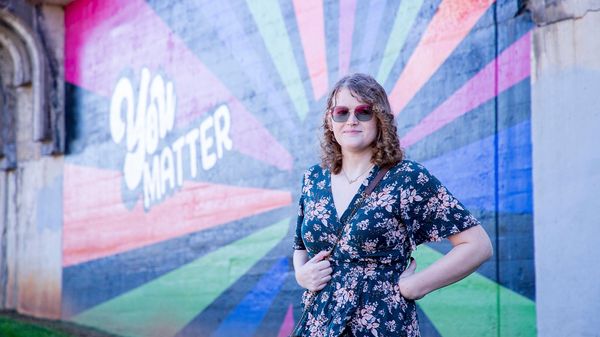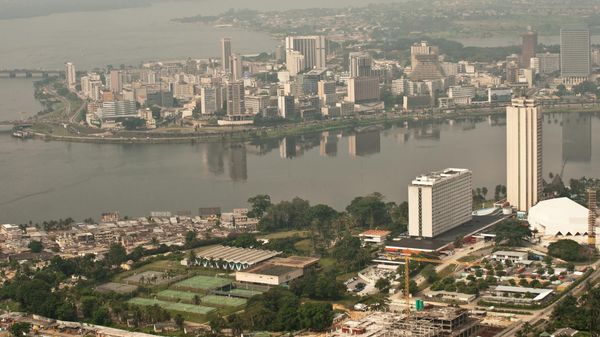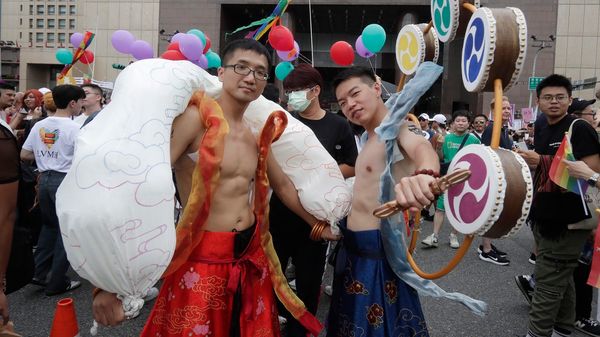
October 21, 2017
SF's Armory Offering Non-Porn Tours
Seth Hemmelgarn READ TIME: 3 MIN.
San Francisco's Armory, the massive brick building in the Mission district that was once the headquarters for the National Guard, and then the home of a company known for fetish porn, is offering tours to highlight its non-porn history.
Kink.com CEO Peter Acworth still owns the building, at 1800 Mission Street, but earlier this year he moved film production to Nevada.
Since mid-September, Matty McCauley, 28, the tour department manager, has been leading 90-minute tours to show off the 200,000 square foot site, which includes the well known drill court, a shooting range, and a room that once housed a swimming pool.
In the past month, about 100 people have taken the tour, including people who trained in the building. Tickets are $25-$35.
"Some people didn't really know what they were walking into," he said, including people who've lived in the city for years but have never been inside the structure.
"The building never stops," said McCauley, who's a transgender man. "... It took me at least a month to not get confused" about which way to go in the hallway.
There's also plenty of history to get lost in. Among other things, the Armory serves as a reminder of the military's role in helping grow San Francisco's gay population.
Men stationed in San Francisco would often stay at the Armory, including men who were part of the "blue discharge," which refers to the blue papers the armed forces used to give gay military members "undesirable" discharges.
After the National Guard vacated the building in the mid-1970s, the Armory stood empty until 2006, when Kink bought it and transformed many of the rooms into porn sets. McCauley doesn't touch on kink in the tours.
"We wanted it to be accessible to everybody, and not just adults," he said, adding, "Regardless of Kink being here ... we're still a historical landmark." A landmark that is listed in the National Register of Historic Places, the structure may not be significantly altered.
On the tour McCauley does talk about the Gold Rush of the 1840s bringing a population boom to San Francisco, and how that led to the state's National Guard being formed.
The current Armory was completed in 1914, two years after construction started and about eight years after the 1906 earthquake that leveled much of the city. After the earthquake, "they decided they needed something that was going to be bigger and stronger" than other armories had been, said McCauley. Primarily, "they wanted to be able to house 1,500 soldiers."
The best known of the Armory's 160 rooms is likely the drill court, where soldiers used to practice their drills and have boxing matches.
Now the site of concerts, the drill court, with its shiny hardwood floors and high, arched ceiling, can hold almost 4,000 people. But as massive as the drill court is, it only accounts for one-fifth of the Armory's square footage.
The basement once housed a swimming pool, a mess hall, and a shooting range.
The pool has been filled in, but the shooting range still features the cubbies where soldiers used to stand to shoot from one side of the long concrete room to the other.
Not far from the shooting range is the ammunition vault, which held all the explosives. McCauley said it was "the safest spot in the Armory." If anything exploded, the solid steel doors would keep it in.
Armory spokesman Mike Stabile said in an email to the Bay Area Reporter, "When we took over the building back in 2006, we were entrusted with its history and legacy, and we've been serious about researching and preserving what we've found ever since. These new Armory tours give us the ability to bring people back in to the building to share that history, adding to the collective memory of a neighborhood at a time when so much else is changing. So we regard the tours the same way we do the sporting events, the fundraisers, and the concerts at the Armory - as part of a larger project to remake the building into vital, living resource for the Mission and the city."
Anyone with photos or other materials related to the Armory's history, especially military-related social events, may contact McCauley at [email protected] .
For more information about the tours, visit http://www.sfarmory.com/tours/ .







